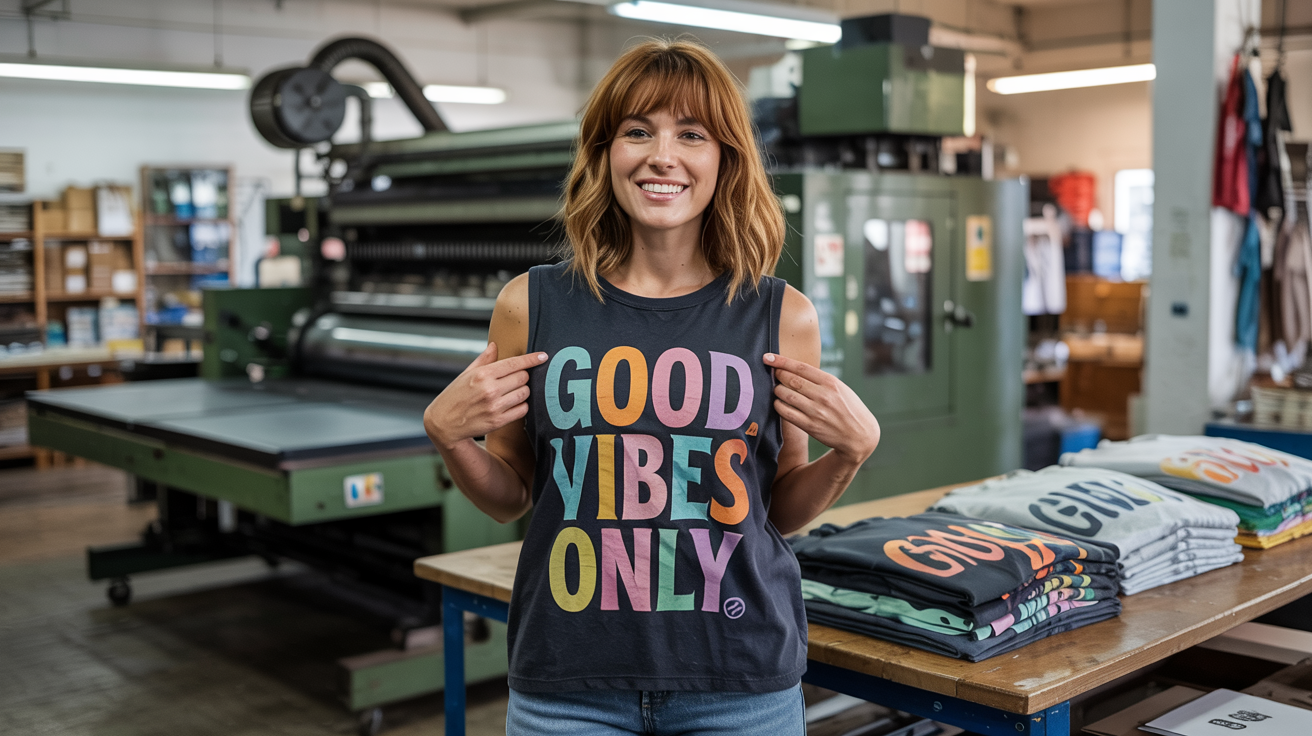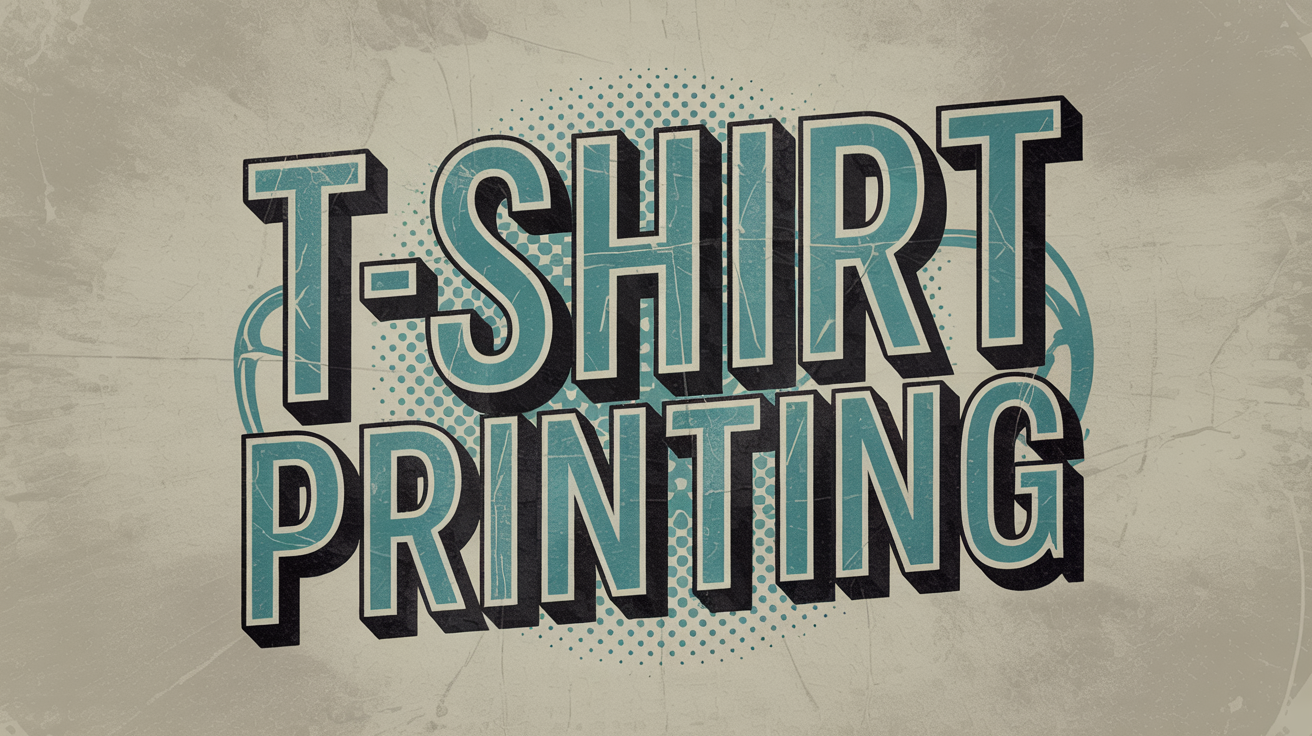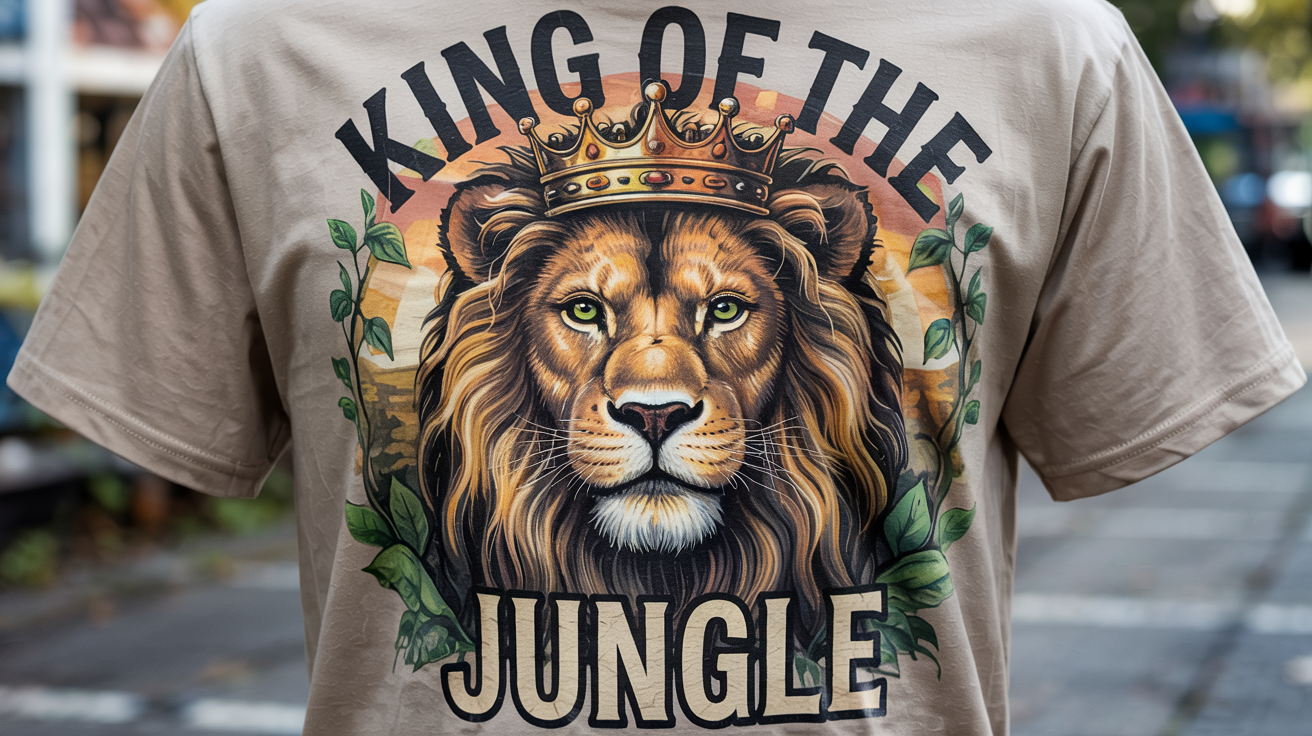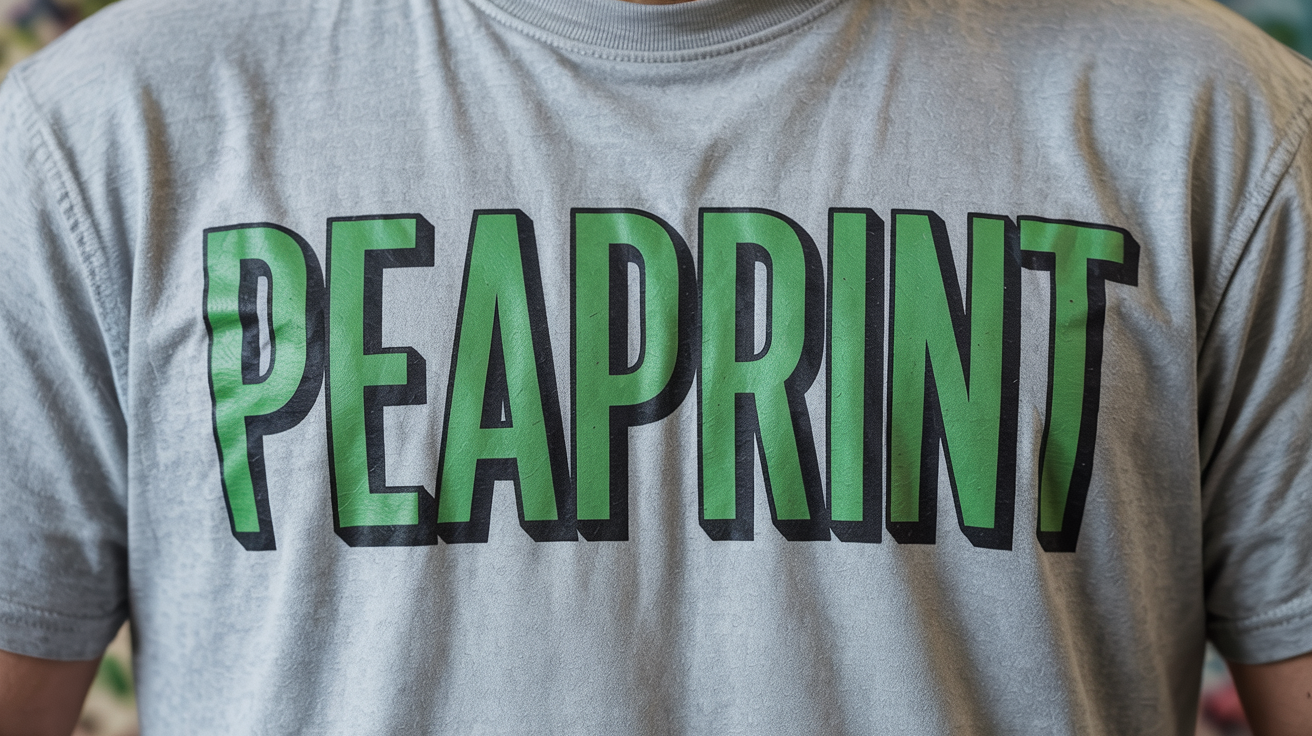T-Shirt Printing for Beginners: Step-by-Step Guide to Custom Shirts
 Introduction
Introduction
Creating custom t-shirts with your own images has never been more accessible. Whether you're designing a single shirt for personal use, creating gifts for friends and family, or starting a t-shirt business, there are multiple approaches to achieve professional-looking results. This comprehensive guide focuses on equipment-free methods using print-on-demand services.
Print-on-Demand (No Equipment Required)
Overview
Print-on-demand (POD) is the most convenient method for putting pictures on shirts without investing in equipment or learning technical skills. POD platforms handle the entire printing, packaging, and shipping process.
Step-by-Step Process
Step 1: Select Your T-Shirt Foundation
Material Selection:
- 100% Cotton: Ideal for direct-to-garment (DTG) printing, offers breathability and comfort
- Cotton-Polyester Blends: Versatile option that works with multiple printing methods
- 100% Polyester: Required for sublimation printing, excellent for athletic wear
- Tri-Blends: Premium feel, works well with DTG and DTF methods
Color Considerations:
- Light Colors (White, Pastels): Best for vibrant, colorful designs; allows maximum color accuracy
- Dark Colors (Black, Navy, Dark Gray): Requires special printing techniques but creates striking contrast with light designs
- Medium Colors: Versatile but may affect color vibrancy of your image
Style Options:
- Classic crew neck t-shirts
- V-neck variations
- Long-sleeve options
- Tank tops and sleeveless shirts
- Performance and athletic wear
Step 2: Prepare Your Image File
Technical Requirements:
- File Formats: PNG (recommended for transparency), JPEG, or SVG
- Resolution: Minimum 300 DPI at actual print size
- Color Mode: RGB for digital printing
- File Size: Balance between quality and upload speed (typically 5-50MB)
Design Optimization:
- Remove backgrounds for versatility across different shirt colors
- Adjust contrast and brightness for fabric printing
- Consider how colors will appear on your chosen shirt color
- Test your design at actual print size before uploading
Image Sources:
- Original photography or artwork
- Digitized hand-drawn sketches
- Professional stock images (with proper licensing)
- AI-generated artwork
- Custom illustrations from freelance designers
- Use free designs from PeaPrint
Step 3: Upload and Position Your Design
Using Design Platforms:
- Drag-and-drop interface for easy positioning
- Real-time preview showing how your design appears on the actual shirt
- Scaling tools to adjust size while maintaining proportions
- Rotation and positioning controls for perfect placement
Design Enhancement Features:
- Text addition with various font options
- Layering multiple design elements
- Pattern creation tools for repeating designs
- Color adjustment tools for final optimization
Step 4: Quality Review and Ordering
Pre-Order Checklist:
- Preview your design in mockup
- Verify sizing and positioning
- Check color accuracy against your original image
- Review shirt specifications (material, size, color)
- Confirm shipping address and timeline
Sample Ordering:
- Order a sample before bulk purchases
- Test print quality and durability
- Evaluate fabric feel and fit
- Check color accuracy in person
- Test wash durability before committing to larger orders
Step 5: Business Integration (Optional)
E-commerce Platform Connection:
- Shopify integration for custom online stores
- Etsy marketplace for handmade/custom items
- Amazon integration for wider reach
- eBay for auction-style or fixed-price listings
- WooCommerce for WordPress-based stores
Automated Fulfillment Benefits:
- No inventory management required
- Automatic order processing and shipping
- Global shipping capabilities
- Customer service handling by POD provider
- Profit margin control through pricing settings
Understanding T-Shirt Printing Methods
Direct-to-Garment (DTG) Printing
Technical Details:
- Uses specialized inkjet technology designed for textiles
- Water-based inks penetrate fabric fibers
- Requires pre-treatment for certain fabrics
- Best for complex, multi-color designs
Optimal Applications:
- Detailed photographs
- Designs with gradients or subtle color variations
- Small batch production
- Cotton and high-cotton blend fabrics
Quality Characteristics:
- Soft hand feel (doesn't add thickness)
- Excellent color reproduction
- Good wash durability with proper care
- No minimum order requirements
Direct-to-Film (DTF) Printing
Process Explanation:
- Design printed on special PET film
- Powder adhesive applied while ink is wet
- Heat-cured to create transfer-ready film
- Heat pressed onto garment
Material Compatibility:
- Works on cotton, polyester, blends, and synthetic fabrics
- Effective on both light and dark garments
- Suitable for performance wear and stretchy materials
Quality Benefits:
- Vibrant colors on any fabric color
- Good stretch and recovery
- Excellent wash durability
- Slightly raised texture
Sublimation Printing
Technical Requirements:
- Polyester fabric or polyester-coated items only
- Sublimation inks that convert from solid to gas under heat
- High-temperature heat press (380-400°F)
- Specialized sublimation paper
Unique Characteristics:
- Ink becomes part of the fabric (no surface texture)
- Permanent, fade-resistant prints
- Unlimited color printing capability
- Works only on white or very light-colored polyester
Best Applications:
- All-over print designs
- Athletic and performance wear
- Designs requiring permanent durability
- Full-color photographic reproductions
Screen Printing
Traditional Method Benefits:
- Extremely durable prints
- Cost-effective for large quantities
- Vibrant, opaque colors
- Works on virtually any fabric type
Limitations:
- High setup costs for small quantities
- Limited color count per design
- Not suitable for photographic images
- Requires separate screen for each color
Embroidery
Quality Characteristics:
- Premium, professional appearance
- Exceptional durability
- Textured, dimensional effect
- Excellent for logos and simple graphics
Considerations:
- Higher cost per unit
- Design complexity limitations
- Not suitable for photographic images
- Best on structured fabrics
Choosing the Right T-Shirt and Materials
Fabric Weight and Quality
Lightweight Fabrics (3.0-4.0 oz):
- More affordable
- Suitable for promotional items
- May show print texture more prominently
- Less durable overall
Medium Weight Fabrics (4.5-5.5 oz):
- Good balance of comfort and durability
- Most popular choice for custom printing
- Suitable for most printing methods
- Versatile for various applications
Heavyweight Fabrics (6.0+ oz):
- Premium feel and durability
- Excellent for retail-quality products
- May require printing method adjustments
- Higher cost but better perceived value
Fit and Style Considerations
Classic Fit:
- Traditional, relaxed silhouette
- Suitable for all body types
- Most cost-effective option
- Universal appeal
Fitted/Slim Fit:
- Contemporary, tailored appearance
- Popular with younger demographics
- May require size adjustments
- Higher perceived fashion value
Performance Fit:
- Athletic cut with moisture-wicking properties
- Ideal for sports teams and active wear
- Usually polyester or poly-blend materials
- Commands premium pricing
Design Preparation Guidelines
Color Theory for T-Shirt Printing
Complementary Color Schemes:
- Use colors opposite on color wheel for maximum contrast
- Effective for making designs pop on fabric
- Consider shirt color as part of overall color scheme
Monochromatic Approaches:
- Different shades of the same color family
- Creates sophisticated, cohesive appearance
- Easier to achieve color consistency in printing
High Contrast Strategies:
- Dark designs on light shirts or vice versa
- Ensures readability and visual impact
- Critical for text-heavy designs
Resolution and Sizing Best Practices
Print Size Guidelines:
- Standard chest print: 10-12 inches wide maximum
- Full chest coverage: 12-14 inches wide
- Pocket area: 4-5 inches maximum
- Back prints: Up to 14 inches wide, 16 inches tall
Resolution Requirements:
- 300 DPI minimum at final print size
- 150 DPI acceptable for large formats
- Vector formats (SVG) preferred for scalability
- Always test print sizes before final production
File Format Optimization
PNG Format:
- Best for designs requiring transparency
- Lossless compression maintains quality
- Larger file sizes
- Ideal for layered designs
JPEG Format:
- Smaller file sizes for faster uploads
- Good for photographic content
- Lossy compression may affect quality
- Standard for most printing applications
SVG Format:
- Vector-based, infinitely scalable
- Ideal for logos and simple graphics
- Smaller file sizes for geometric designs
- Not suitable for photographic content
Choose PeaPrint for printing custom shirts
PeaPrint offers professional-quality custom t-shirt printing with unmatched convenience and reliability.
Why PeaPrint stands out:
- Extensive shirt collection: From classic cotton tees to premium tri-blends, performance wear, and fashion-forward styles in dozens of colors and sizes
- Multiple printing methods: DTG, DTF, sublimation, and embroidery options to match any design vision and budget
- User-friendly design tools: Intuitive online designer with drag-and-drop functionality, text options, and real-time previews
- No minimums required: Order single shirts for personal use or bulk quantities for events and businesses
- Global shipping: Fast, reliable delivery worldwide with tracking included
- Quality guarantee: Premium materials and rigorous quality control ensure every shirt meets professional standards
Whether you're creating a single custom gift or launching your t-shirt business, PeaPrint handles printing, packaging, and shipping so you can focus on what matters most - your creativity.
Frequently Asked Questions
Q: What's the easiest way to put a picture on a shirt?
A: Print-on-demand services offer the simplest solution with no equipment required. Upload your design, select your shirt, and the printing company handles everything else.
Q: What type of image works best for t-shirt printing?
A: High-resolution images (300 DPI minimum) with good contrast work best. Simple designs with clear lines translate better than complex, detailed photographs. Consider how colors will appear on your chosen shirt color.
Q: Can I print on dark shirts?
A: Yes, but it requires specific methods:
- DTF printing works excellently on dark fabrics
- Special "dark" transfer papers are available for DIY methods
- DTG printing on dark shirts requires white ink underbase
- HTV works on any color shirt
Q: How long will my printed design last?
A: Durability varies by printing method and care:
- Professional DTG/DTF: 50+ washes with proper care
- Quality iron-on transfers: 20-30 washes
Q: Can I sell shirts with my designs?
A: Yes, provided you own the rights to the design or have proper licensing. Ensure you're not infringing on copyrights or trademarks. Original artwork, licensed stock images, and properly attributed designs are safe to use commercially.



